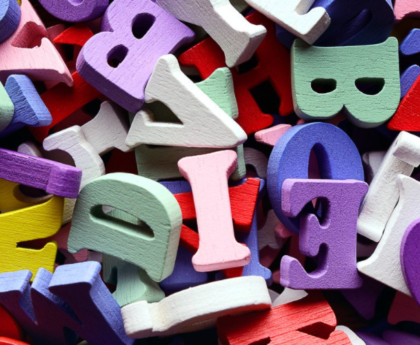You walk into the library, excited to find books for your kindergartener who’s just starting to read. The children’s section offers hundreds of brightly colored early readers. They all look educational. They’re all labeled for beginning readers. So you grab a stack, head home, and settle in for reading time.
But ten minutes later, your child is guessing wildly at words, looking at pictures instead of letters, and growing frustrated. You’re both confused. These are supposed to be beginner books. What’s going wrong?
The problem might not be your child. It might be the books. Not all beginning reader books are designed the same way, and the difference between decodable books and leveled readers can make or break your child’s early reading experience.
What Decodable Books Actually Are
Decodable books are precisely controlled texts where typically 80-90% of the words can be sounded out using the phonics skills your child has already been explicitly taught. If your child has learned the sounds for letters M, A, T, and S, a decodable book at that level will primarily contain words like “mat,” “sat,” “at,” and “Sam.” The child can decode—sound out—nearly every word on the page using known letter-sound relationships.
These books aren’t trying to be literary masterpieces. They’re practice tools. Think of them like training wheels or piano scales—structured practice that builds automatic skills. The stories might be simple: “Sam sat. Mat sat. Sam and Mat sat.” But that simplicity is intentional. It allows your child to focus entirely on the skill they’re learning: applying phonics knowledge to decode words.
Example 1: “Cat on a Mat”
If your child knows short vowel sounds and basic consonants, this decodable focuses entirely on CVC (consonant-vowel-consonant) words: cat, mat, sat, fat, pat. Every word follows the same pattern they’ve been taught. Success is almost guaranteed because the book matches their exact skill level.
Example 2: “The Big Ship”
Once your child has learned consonant digraphs like “sh” and “th,” a decodable reader introduces words using those specific patterns: ship, shop, this, that, fish, wish. The book doesn’t throw in random words they haven’t learned. It reinforces the exact skills from their recent lessons.
Example 3: “Jake’s Cake”
After learning the silent E rule (magic E), decodables introduce words like cake, bake, make, take, Jake, lake. The child practices this new pattern repeatedly in context, building automaticity with that specific phonics concept before moving on.
What Leveled Readers Actually Are
Leveled readers are organized by overall difficulty, but that difficulty isn’t based on phonics patterns. Instead, these books are leveled by factors like sentence length, vocabulary complexity, concept difficulty, and illustration support. A Level C book might have simple sentences and supportive pictures, but the words themselves don’t follow any particular phonics sequence.
Leveled readers often include high-frequency words that don’t follow standard phonics rules—words like “said,” “was,” “they,” and “you.” Beginning readers are expected to memorize these words by sight or guess them using context clues and pictures. The underlying philosophy assumes children can learn to read through exposure and meaning-making rather than systematic decoding.
Many popular early reader series are leveled readers: books that look accessible but contain words your child hasn’t been taught how to decode. When children encounter these unfamiliar words, they’re implicitly encouraged to guess using the first letter and picture clues rather than sound out the entire word.
Example 1: “The Birthday Party”
A typical Level B leveled reader might say: “Come to my party! We will have cake and ice cream!” Your kindergartener knows basic letter sounds but hasn’t learned the phonics patterns for “come,” “party,” “will,” or “have.” They’re stuck guessing or memorizing whole words, not actually reading.
Example 2: “Going to the Zoo”
The text reads: “Look at the monkey! He is funny. Look at the elephant! She is big.” Words like “look,” “monkey,” “funny,” and “elephant” don’t follow beginning phonics patterns. Children are expected to use the pictures to figure out what the words say—a guessing strategy, not true reading.
Example 3: “My Family”
This leveled reader includes: “This is my brother. This is my mother. This is my father.” The word “brother” contains an R-controlled vowel and a consonant digraph—advanced patterns. “Mother” and “father” have the tricky “th” and unusual vowel patterns. A true beginner can’t decode these words yet, so they memorize or guess based on family photos.
Why This Difference Matters Enormously
When children read decodable books matched to their phonics instruction, they practice applying the decoding skills they’re learning. Each successful page builds confidence and reinforces that phonics works. They experience: “I learned these sounds, I applied them to these letters, and I read actual words!” This is empowering and creates competent, confident readers.
When children read leveled readers before they have sufficient phonics knowledge, they learn to guess. They look at the first letter and the picture and make their best prediction. Sometimes they’re right, which reinforces the guessing strategy. Sometimes they’re wrong, which creates confusion and frustration. Either way, they’re not learning to decode. They’re learning to compensate for not being able to decode.
This guessing strategy, sometimes called “three-cueing,” has been thoroughly debunked by reading science. Research consistently shows that skilled readers decode words accurately by processing all the letters, not by guessing from context. When we give beginning readers books that require guessing rather than decoding, we’re teaching them habits they’ll eventually need to unlearn.
The real tragedy is that many parents and even some teachers don’t realize the distinction. They see “early reader” or “Level A” on a book and assume it’s appropriate for beginners. But if the book doesn’t match the child’s phonics knowledge, it’s not actually readable for that child. It’s only guessable.
Choose the Right Books for Your Beginning Reader
Here’s the practical reality: your beginning reader needs decodable books that match their current phonics skills for practice reading. These books should align with whatever systematic phonics program they’re using, whether that’s at school or at home with an app like Reading.com.
Once your child has strong decoding skills and can tackle most phonics patterns automatically, leveled readers become more appropriate. At that point, they have the decoding foundation to puzzle through unfamiliar words and can benefit from more complex, engaging stories. But for true beginners, children in their first year or two of reading instruction, decodables are essential.
Look for books labeled “decodable” that specify which phonics skills they use. Many publishers now create decodable series that progress systematically through phonics patterns. Ask your child’s teacher what phonics skills they’re currently learning, then find decodables that practice exactly those skills.
Save the cute, leveled readers with complex vocabulary for read-aloud time, when you’re reading to your child. They can enjoy the stories and illustrations without the frustration of trying to decode words they haven’t been taught. But for practice reading, when your child is doing the reading, stick with decodables matched to their skills.
Set Your Child Up for Reading Success
Ready to give your beginning reader the foundation they deserve? Reading.com teaches systematic phonics skills in the exact sequence children need, making every reading experience a success. Start your 7-day free trial and discover how the right instruction creates confident, capable readers.





